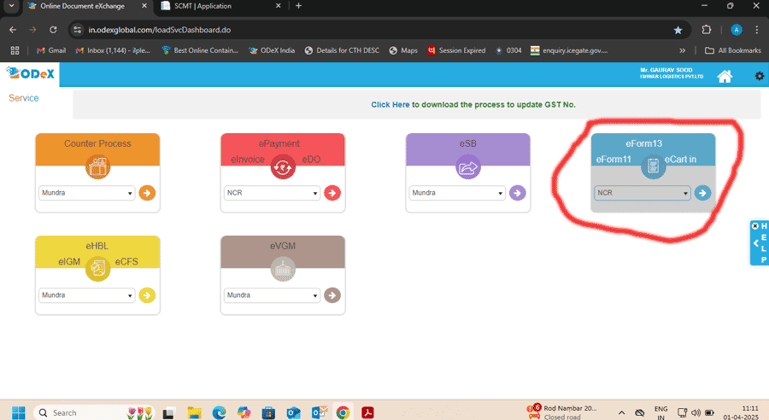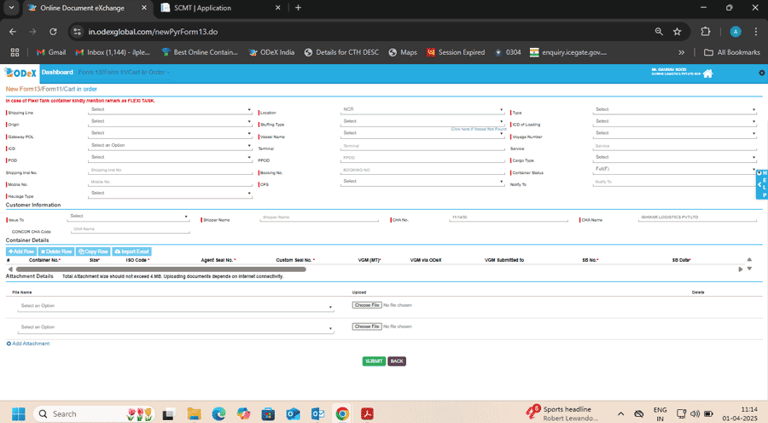What is a Forwarding Note in Export?
A Forwarding Note is a document used in international trade and logistics to provide shipping instructions to a freight forwarder, shipping line, or transport company. It contains essential shipment details, including cargo specifications, destination, and handling instructions.
This document helps ensure smooth cargo movement from the exporter’s premises to the port and eventually to the consignee.
Purpose of a Forwarding Note
✅ Communicates Shipping Instructions: Provides clear details on how the cargo should be handled and transported.
✅ Ensures Proper Documentation: Helps the freight forwarder process the shipment correctly.
✅ Aids in Customs Clearance: Contains relevant export information required for customs procedures.
✅ Avoids Delays & Errors: Reduces the risk of misrouting or shipment issues.
Process of Forwarding Note Submission in Export
Step 1: Prepare the Forwarding Note
The exporter or their Customs House Agent (CHA) prepares the Forwarding Note, including the following details:
Shipper/Exporter Details (Company name, address, contact details)
Consignee Details (Name, address, country, and contact details)
Booking Number (Provided by the shipping line)
Bill of Lading (BL) or Airway Bill (AWB) Reference
Port of Loading (POL) & Port of Discharge (POD)
Mode of Transport (Sea, Air, Rail, or Road)
Container Details (Container number, type, seal number)
Cargo Description (Type of goods, weight, volume, HS code)
Freight Terms (FOB, CIF, EXW, etc.)
Special Handling Instructions (If any, e.g., hazardous cargo, temperature control)
Step 2: Submit the Forwarding Note
The exporter submits the Forwarding Note to the freight forwarder or carrier.
Some countries or ports require online submission through Port Community Systems (PCS).
For air cargo, the airline’s cargo handling system or IATA’s e-Freight system may be used.
Step 3: Verification & Processing
The freight forwarder/carrier verifies the shipment details and checks for any missing documents.
If all details are correct, they confirm the shipment booking and proceed with logistics arrangements.
Step 4: Cargo Handover & Transport
Based on the Forwarding Note, the transport company or shipping line collects the cargo and moves it to the port/airport.
Customs clearance and Form-13 (for Indian ports) may be required before final port entry.
Step 5: Issuance of Bill of Lading or Airway Bill
Once cargo is accepted and loaded onto the vessel/aircraft, the Bill of Lading (BL) or Airway Bill (AWB) is issued.
The Forwarding Note reference is often mentioned in the BL/AWB for tracking.
How to Submit a Forwarding Note Online?
Many shipping lines and freight forwarders offer digital forwarding note submission via:
🔹 Port Community System (PCS 1x) in India
🔹 Shipping Line Portals (Maersk, MSC, CMA CGM, etc.)
🔹 Freight Forwarder Online Platforms (DHL, DB Schenker, Expeditors, etc.)
🔹 Air Cargo e-Freight Platforms (IATA e-AWB)
Key Points to Remember
✅ Ensure Accurate Details: Incorrect information can cause delays in shipping and customs clearance.
✅ Submit on Time: Forwarding Notes should be sent well before the cargo delivery cutoff.
✅ Check Shipping Line or Forwarder Requirements: Some carriers may have specific formats or online portals.




Knowledge
Connect
info@eduglow.in
+91-9313746414
© 2024. All rights reserved.
